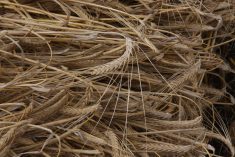Fed cattle prices rise
Fed cattle cash prices rallied last week with averages up $2.75 per hundredweight despite a falling futures market, said Canfax.
The highs for the week were recorded mid-week when the most active trade occurred. Buyer interest waned a little at week’s end.
Most buyers were Canadian, but some cattle headed south early in the week, Canfax said.
More than 17,000 head traded, up 43 percent from the previous week’s small volume.
Alberta prices Feb. 6 were steers $116-$118.15 per cwt., flat rail $194.65 and heifers $115.75-$117.75, flat rail $194.
Read Also

Vegetable oil stocks are expected to tighten this year
Global vegetable oil stocks are forecast to tighten in the 2025-26 crop year, this should bode well for canola demand.
The American cash market climbed $2 per cwt. during the week, despite the futures market retreat, driven by analysts’ thoughts that the season’s high price had been set and the perceptions that buyers were balking at the high costs.
Most packers were able to build their live inventory, allowing them to wait and watch the direction of the U.S. market this week.
Steady to stronger American prices should mean Canadian prices would remain strong.
Canfax recommended feedlots continue selling because prices are close to the season’s highs.
Beef prices steady
Beef trade was fairly steady. Calgary wholesale beef prices climbed with the cash market. Calgary is steady to $3 per cwt. higher this week at $179-$185. The eastern market is steady at $190-$192. Credit value prices are steady to $5 stronger at $105-$112.
Feeder prices stable
Feeder prices were steady to slightly higher on most classes, said Canfax.
Steers traded steady to 75 cents per cwt. higher while heifers were mostly steady with 500-600 lb. heifers $3 higher and 900 lb. heifers $1 lower.
Strength in the fed cash market was a factor in the stronger prices by week’s end. As well, increased snowfall in some areas helped the lighter cattle markets.
Only 36,000 head were reported sold through Alberta auction markets, 13 percent smaller than the week before and 22 percent smaller than the same week last year.
Slaughter cows traded steady to 50 cents higher on average. The average D1, D2 cow price was $58.50 with grain-fed cows selling as high as $65.
Canfax expects heavier feeders will likely be steady at best as feedlots are placing most of the heavy feeders against a lower summer market.
Demand for summer grass cattle has increased and lightweight calves may continue to be strong due to increased moisture in some areas.
In stock cow trade, bred cows were $600-$1,400 with most at $800-$1,250. Bred heifers were $800-$1,450 with most at $1,000-$1,350. Cow-calf pairs were $1,025-$1,550.
Hog prices drop
Lower wholesale prices for pork loins, picnics and hams reduced the U.S. pork cut-out value.
Various negative factors, such as reduced retailer demand for pork and pork export market uncertainty, influenced cash and futures prices as the week progressed, Manitoba Agriculture said.
Packer profit margins have dropped in recent weeks, which led to a decrease in hog slaughter last week.
The previous week’s U.S. kill was still more than 1.9 million head, so packers must reduce slaughter to stimulate wholesale pork prices.
The Iowa-Minnesota daily direct hog price (plant mean, 51-52 percent, lean carcass converted to live weight) declined from a high of $37.09 US per cwt. on Feb. 3 to a low of $36.43 on Feb. 6. However, on average, the week’s hog price was virtually unchanged from the week before.
















